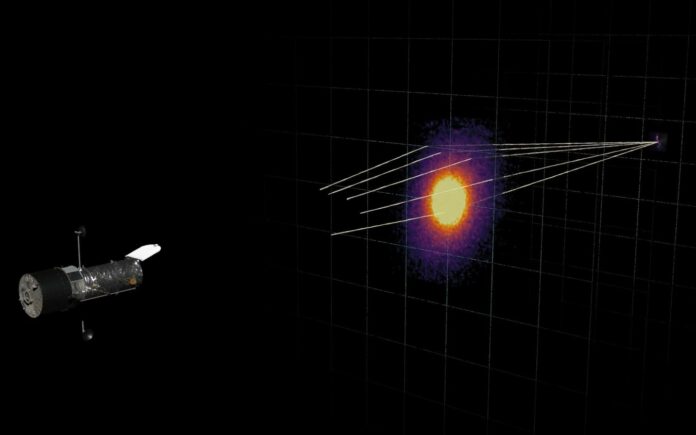Astronomers Stunned by Discovery of One of the Biggest Black Holes on Record
A group of astronomers from Durham University in the UK has made a groundbreaking discovery using gravitational lensing. By utilizing this phenomenon, which occurs when a galaxy situated in the foreground bends the light from a further object, magnifying it in the process, the team was able to uncover one of the largest black holes ever recorded.
The astronomers also used advanced supercomputer simulations to analyze how the black hole inside a galaxy, millions of light years away from our planet, was bending light.
This cutting-edge approach enabled the researchers to identify an ultramassive black hole, estimated to be over 30 billion times the mass of the Sun, in the foreground galaxy.
This size of the black hole is rarely observed by astronomers and represents a significant breakthrough in our understanding of the universe.
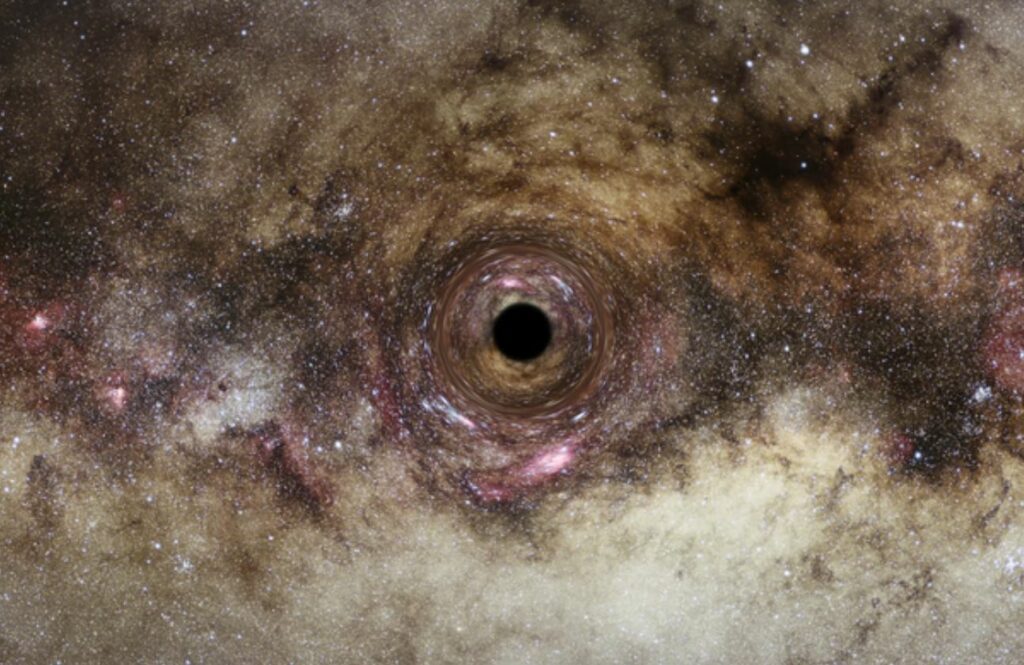
The technique used to identify this black hole involved simulating light’s journey through the Universe numerous times, with each simulation featuring a black hole of varying mass that affected the light’s path towards Earth. Remarkably, this is the first instance in which this particular technique has been employed to detect a black hole.
The researchers observed that when they introduced an ultramassive black hole into one of their simulations, the path taken by the light from the distant galaxy to Earth aligned with the path captured by the Hubble Space Telescope.
The study detailing these findings has been published today in the Monthly Notices of the Royal Astronomical Society.
“This particular black hole, which is roughly 30 billion times the mass of our Sun,” remarks Lead author Dr. James Nightingale, “is one of the biggest ever detected and on the upper limit of how large we believe black holes can theoretically become, so it is an extremely exciting discovery.”
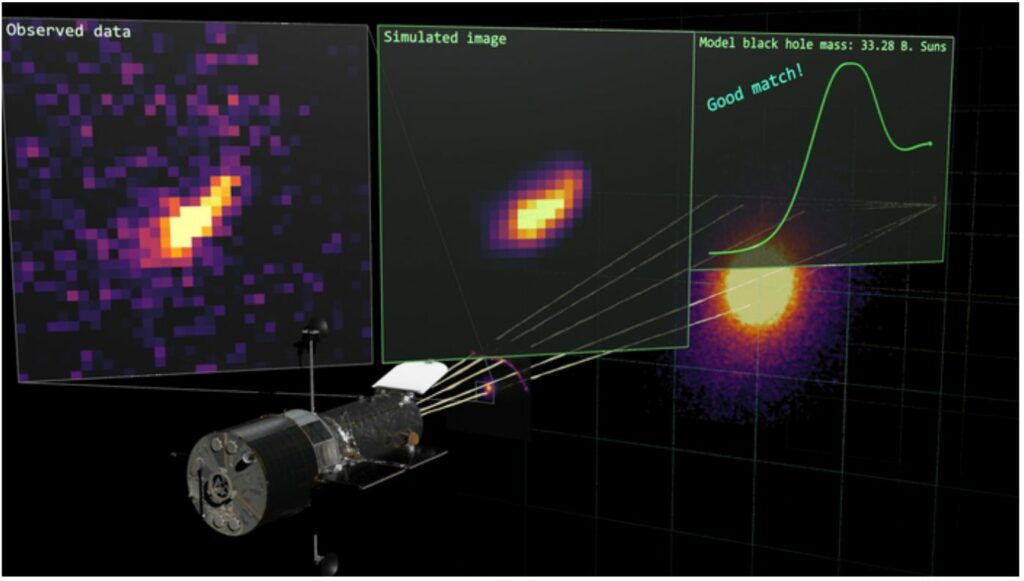
When the gravitational field of a foreground galaxy bends the light of a background galaxy, a phenomenon called gravitational lensing occurs. This results in the background galaxy appearing to us multiple times, much like a lens. Additionally, the lensing effect magnifies the background galaxy, providing scientists with the ability to study it in greater detail.
“Most of the biggest black holes that we know about,” as explained by the author, “are in an active state, where matter pulled in close to the black hole heats up and releases energy in the form of light, X-rays, and other radiation.
“However, gravitational lensing makes it possible to study inactive black holes, something not currently possible in distant galaxies. This approach could let us detect many more black holes beyond our local universe and reveal how these exotic objects evolved further back in cosmic time.”
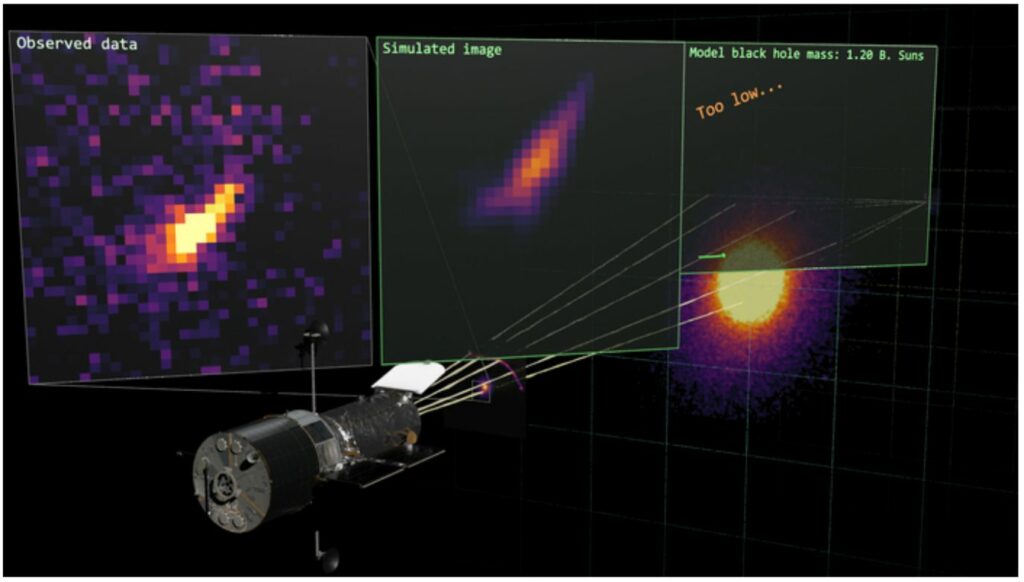
The Max Planck Institute in Germany also contributed to the study, which presents an exciting prospect for astronomers to uncover numerous inactive and ultramassive black holes that were previously unknown, as well as investigate how these black holes grew to be so massive.
The origins of this discovery can be traced back to 2004, when Professor Alastair Edge, another astronomer at Durham University, noticed a massive gravitational lensing arc while reviewing images from a galaxy survey.
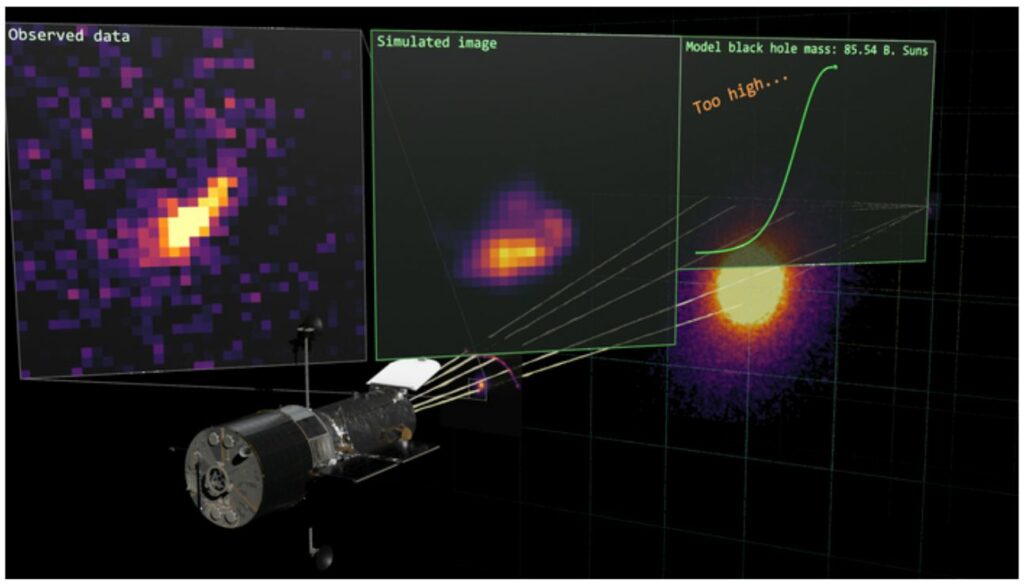
Almost two decades later, with the aid of high-resolution images obtained from NASA’s Hubble telescope and the DiRAC COSMA8 supercomputer facilities at Durham University, Dr. Nightingale and his team were able to revisit this observation and delve deeper into it.
With this discovery, the team anticipates that it will pave the way for further investigation into the enigmatic nature of black holes. They aspire to utilize future large-scale telescopes to examine even more remote black holes, allowing astronomers to gain a better understanding of their size and scope.
Source: 10.1093/mnras/stad587
Image Credit: ESA/Hubble, Digitized Sky Survey, Nick Risinger (skysurvey.org), N. Bartmann
